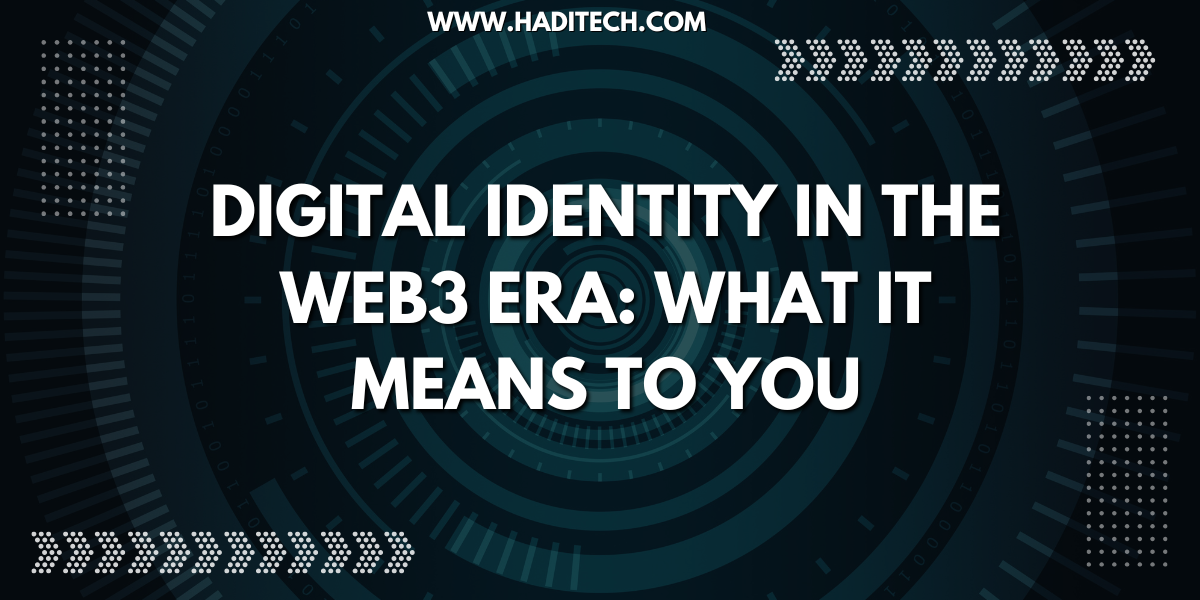Digital Identity in the Web3 Era: What It Means to You
The web is changing, and with it, digital identity. As blockchain and decentralized technology drive the Web3 era, digital identity is moving away from controlling powers and towards you. So, what does that mean to you? This blog delves into the basics of digital identity in Web3, its implications, and how it can change your web experience.

What is Digital Identity?
Digital identity refers to the set of data that constitutes you online—your social media presence, email addresses, digital wallets, and so forth. On the old internet (Web2), that data is usually in the hands of central authorities such as large tech companies, who also control and protect your data. Web3 has instead a decentralized model to offer, with more control residing in your hands.
The Web3 Difference
Web3 is blockchain technology-based, and in Web3, decentralized platforms can put security, sovereignty, and user privacy first. In Web2, where one platform has your data, Web3 allows you to own your digital identity through:
Self-Sovereign Identity (SSI): Your identity information is controlled by crypto keys, locked away in digital wallets, without a middleman.
Decentralized Identifiers (DIDs): User-controlled, unique identifiers that are not connected to a central authority.
Verifiable Credentials: Cryptographic credentials (such as IDs or diplomas) that you may selectively share, providing privacy.
For instance, rather than using a Google account to sign into a service, you might employ a DID inside a blockchain such as Ethereum to establish who you are without revealing too much about yourself.
Why It Matters to You
This movement towards Web3 digital identity has real-world uses in your own life:
Privacy and Control: You control what data you share. Need to mark yourself as over 18 without sharing your birthdate? Web3 enables that.
Security: Decentralized architecture lessens the threat of data breaches. Your data aren’t all kept on a single, hackable database.
Portability: Your online identity is easily transferable across services, without needing to sign up anew on each service.
Trust: Verifiable credentials prove identity, whether you’re displaying a degree to an employer or claiming ownership of a digital asset.
Consider job hunting: rather than submitting a resume and waiting to be contacted, you display a verifiable credential issued by a trusted organization, instantly verifying your credentials.

Real-World Applications
Web3 digital identity is already being tested across sectors:
Finance: DeFi platforms employ DIDs to facilitate safe, anonymous transactions.
Healthcare: You can own your medical records, only sharing what’s needed with providers.
Social Media: Web3 sites enable you to control and be compensated for your content, regardless of centralized algorithms.
Gaming: NFT-attached digital identities enable you to own and transfer in-game assets across platforms.
For example, initiatives such as uPort and Civic are constructing SSI systems, while Ethereum Name Service (ENS) enables you to substitute tedious wallet addresses with simple-to-remember names.
Challenges to Consider
While promising, Web 3 digital identity is not free of challenges:
Adoption: Blockchain systems are antithetical to mass consumers. Intuitive user interfaces are essential.
Regulation: Governments will find it difficult to accommodate decentralized identities within current legal frameworks.
Interoperability: Varying blockchains and platforms need to talk to one another seamlessly for mass adoption.
In spite of these difficulties, the pace of Web 3 is such that all these problems will be solved in good time.
How to Get Started
Web3 digital identity interested? This is where you can begin
Create a Digital Wallet: MetaMask or Trust Wallet apps allow you to control cryptographic keys and DIDs.
Discover SSI Platforms: Explore solutions such as uPort or Microsoft ION for user-centric identity solutions.
Discover DIDs and Credentials: Resources like the World Wide Web Consortium (W3C) provide DIDs and credentials tutorials.
Join Web3 Communities: Converse on platforms such as X or Discord to stay up to date.
The Future of Digital Identity
As Web3 matures, digital identity will likely become more seamless and integrated into everyday life. You’ll have a single, secure identity that works across platforms, from banking to social media, without compromising privacy. The power will shift from corporations to individuals, making the internet a more equitable space.

Conclusion
Web3 digital identity is empowerment. It’s taking your data in your own hands, your privacy too, and engaging online with more trust and security. Technology keeps advancing, but its ability to transform the way we live online is certain. Begin exploring Web3 today—it’s your identity, and you should be the one to give it meaning.




